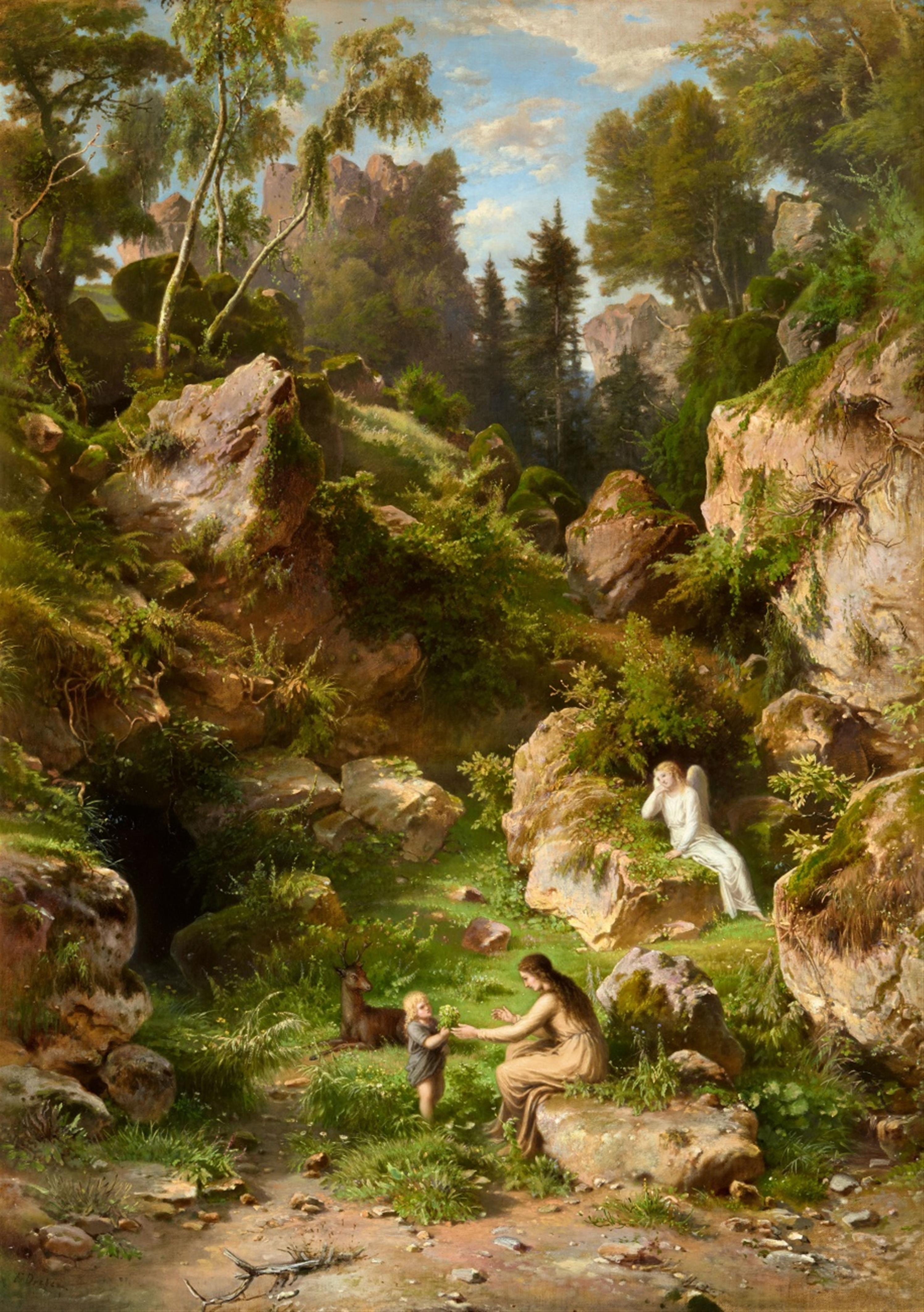Heinrich Dreber, called Franz-Dreber
Wooded Landscape with Genevieve and the Angel
Oil on canvas. 140.5 x 100.5 cm.
Signed lower left: F. Dreber.
Between 1862 and 1869, Heinrich Dreber painted eight landscapes for the music room at Villa Wesendonck in Zurich commissioned by Otto Wesendonck. Today, Wesendonck is best known as the patron of Richard Wagner, who he met in Zurich in 1852 and supported financially thereafter. He allowed Wagner to move into the summer house of his Villa in 1857 where the composer wrote his “Wesendonck Lieder” and five poems dedicated to his patron's wife Mathilde Wesendonck. Otto Wesendonck's collection of old master paintings was sold in Lempertz auction 376 in Cologne in 1935.
Four of the eight paintings which Dreber painted for the villa's so-called “Dreberzimmer” depicted Mediterranean landscapes with scenes from ancient Greek mythology, the other four were northern European landscapes with motifs from German sagas and fairy tales. The present work “Landscape with Genevieve and the Angel” belongs to the latter group, which Wesendonck commissioned in December 1865 and which was delivered to Zurich in July 1868.
According to legend, Genevieve was the daughter of the Duke of Brabant. She was left alone when her husband Count Siegfried of Palatinate went to war and in his absence, she was accused of adultery by his Stadtholder after rejecting his advances, and sentenced to death. Genevieve escaped execution and instead lived alone with her son in a woodland cave where, as a sign of divine providence, a doe appeared whose milk saved the two from certain death.
Dreber depicts this popular tale, which was adapted in numerous poems, paintings, and operas, in a densely wooded landscape. The figures of Genevieve, her son, and the doe form the focus of the composition, although they are placed in the lower edge of the painting. Above them stands the figure of the guardian angel, who looks down towards Genevieve and thus returns the viewer's gaze to the central motif. A version of this motif painted by Dreber's drawing teacher Ludwig Richter 27 years previously in 1841 omits the figure of the guardian angel, although the composition appears similar in the placement of the figures within the landscape (Hamburger Kunsthalle, inv. no. HK-1236). Heinrich Dreber was taught under Ludwig Richter at the Dresden Academy from 1836 to 1841. He moved to Rome two years later where, apart from two short trips back to Germany, he would remain for the rest of his career. The majority of his works are large-format landscapes with a slightly melancholy air, populated by characters from mythological and biblical narratives or pastoral figures, which has led him to be considered a forerunner of Romantic Neoclassicism and Symbolism.

